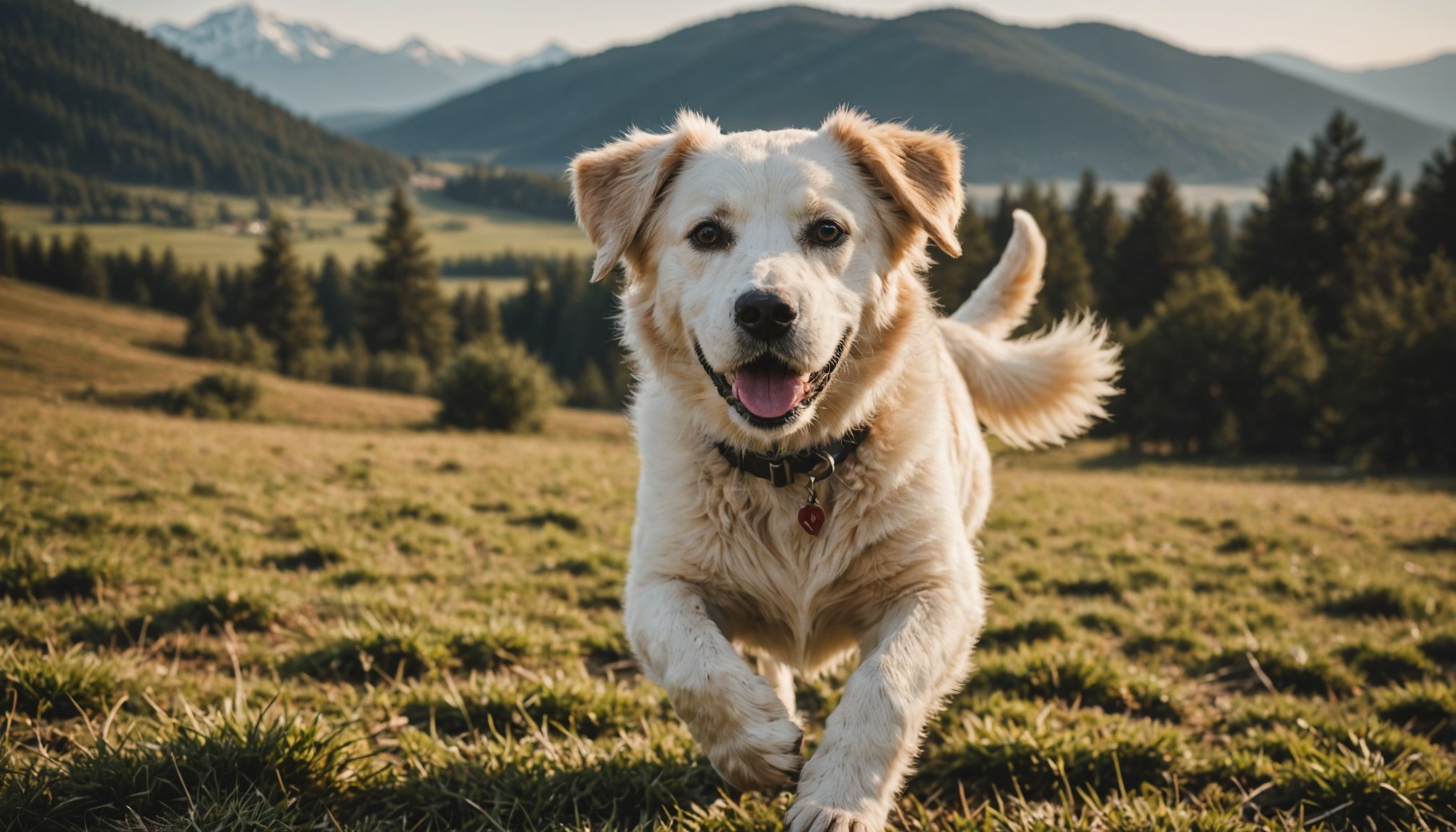Mastering Canine Adaptability: Tips for Teaching Your Dog to Thrive in Various Environments
Understanding the Importance of Adaptability in Dogs
When it comes to dog training, one of the most crucial aspects is teaching your dog to adapt to various environments. This adaptability is key to ensuring your furry friend remains calm, obedient, and happy in different settings. Whether you’re taking your dog to the park, a friend’s house, or even a busy city street, their ability to adapt can make all the difference.
“Consistency is key – even during rushed morning walks,” notes Mandy Majchrzak, owner and trainer at Clever Canine Dog Training. This consistency helps dogs feel secure and reduces anxiety-driven behaviors, which is essential for their overall well-being and your peace of mind.
Also to read : Mastering Competitive Agility: A Guide to Training Your Border Collie for Success
Creating a Structured Routine
Dogs thrive on predictability, so establishing a structured routine is vital for their adaptability. Here are some steps to create a routine that works for you and your dog:
Consistent Playtime, Feeding, and Rest Schedules
- Set specific times for training, play, and rest. This helps your dog know what to expect and reduces anxiety.
- For example, Emma, a marketing executive, found that setting a consistent feeding routine for her Lab mix, Rocky, significantly improved his kitchen manners.
Incorporating Training into Daily Activities
- Use your morning routine to train your pup. While you brew your coffee, have your dog practice “sit” and “stay” commands.
- Turn commute time into training time. Practice commands like “look at me” or “quiet” while driving to work or during daycare drop-off.
Meal Times as Training Opportunities
- Use your dog’s meal times for training. Have them sit and wait before you put the bowl down. This teaches your dog table manners and reinforces basic commands.
Leash Training for Various Environments
Leash training is a fundamental aspect of teaching your dog to adapt to different environments. Here’s how you can make it effective:
Also to read : Creating the Perfect Healing Haven: A Guide to Setting Up an Ideal Recovery Space for Your Post-Surgery Pet
Step-by-Step Leash Training
- Master the Basics: Practice inside while checking emails. Have your dog follow you from room to room, rewarding calm behavior.
- Set Up for Success: Position your dog on one side consistently. Keep treats in an easily accessible pocket. Use a standard 6-foot leash, not retractable.
- The Stop-and-Go Technique: When pulling starts, stop completely. Resume walking when the leash loosens. This teaches your dog that pulling gets nowhere.
Choosing the Right Location
- Select locations that are conducive to your dog’s learning. For example, if your dog is easily distracted by squirrels, start in less distracting areas and gradually move to more challenging environments.
- Weather also plays a role. In places like Michigan, weather-smart training is essential to avoid disruptions due to weather conditions.
Socialization and Mental Stimulation
Socialization and mental stimulation are critical for a dog’s adaptability and overall development.
Socialization Opportunities
- Dog daycare facilities offer excellent socialization opportunities. Look for facilities with ample space for dogs to play and interact safely under the supervision of trained staff.
- Structured play sessions, group activities, and one-on-one attention from staff members can help dogs build confidence and develop social skills.
Mental Stimulation
- Engage your dog in activities that provide mental stimulation, such as puzzle toys and scent games.
- Create a quiet space for your dog during calls or noisy times, and consider using white noise to mask outside sounds.
Positive Reinforcement and Clicker Training
Positive reinforcement is a powerful tool in dog training, and clicker training is a method that leverages this principle effectively.
How Positive Reinforcement Works
- Positive reinforcement involves rewarding desired behaviors rather than punishing undesired ones.
- Use treats, praise, and affection to reinforce good behavior. For example, when your dog follows a “sit” command, reward them immediately with a treat and praise.
Clicker Training Basics
- Introduction to Clicker: Introduce the clicker sound during training sessions to mark the exact moment your dog performs the desired behavior.
- Association with Rewards: Immediately follow the click with a treat or praise to associate the sound with the reward.
- Gradual Phase-Out: As your dog becomes more proficient, gradually phase out the treats and use the clicker sound alone as a marker.
Practical Tips for Busy Owners
For busy professionals, finding time for dog training can be challenging, but there are several practical tips to help you balance your schedule.
Quick Training Sessions
- Use natural breaks between meetings for quick training sessions.
- Practice commands like “look at me” or “quiet” while stuck in traffic during your commute.
Remote Work Solutions
- Create a “walk station” near your door with all supplies ready to go, making it easier to fit in a quick walk or training session during the day.
- Incorporate training into your wind-down routine. While watching TV or reading a book, practice “down” or “stay” commands with your pup.
When to Seek Professional Help
Sometimes, despite your best efforts, you may need extra support. Here are some signs that it’s time to seek professional dog training help:
Signs of Needing Professional Help
- Persistent Behavioral Issues: If your dog continues to exhibit problematic behaviors such as leash pulling, counter surfing, or separation anxiety despite your efforts.
- Lack of Progress: If you notice no improvement in your dog’s behavior after consistent training.
- Specialized Needs: If your dog has specific needs or conditions that require specialized training, such as agility training or addressing fear-based behaviors.
Success Stories and Testimonials
Real-life success stories can be incredibly motivating and provide valuable insights into what works.
Carol’s Transformation
- Carol, a busy lawyer, started using her morning coffee time to train her energetic Lab, Cooper. Within weeks, Cooper’s behavior improved dramatically, showing that small pockets of time can make a big difference.
Emma’s Experience
- Emma, a marketing executive, found that setting a consistent feeding routine and adding quick pre-dinner training sessions significantly improved her Lab mix Rocky’s kitchen manners.
Teaching your dog to adapt to various environments is a journey that requires patience, consistency, and the right techniques. By establishing a structured routine, focusing on leash training, providing socialization and mental stimulation, and using positive reinforcement and clicker training, you can help your dog thrive in any setting.
Here is a comprehensive table summarizing the key points:
| Aspect of Training | Tips and Techniques |
|---|---|
| Structured Routine | Set specific times for training, play, and rest. Use meal times for training. |
| Leash Training | Master the basics, set up for success, use the stop-and-go technique. |
| Socialization | Use dog daycare facilities, engage in structured play sessions. |
| Mental Stimulation | Use puzzle toys, scent games, and create a quiet space. |
| Positive Reinforcement | Reward desired behaviors with treats, praise, and affection. |
| Clicker Training | Introduce the clicker sound, associate with rewards, gradually phase out treats. |
| Practical Tips for Busy Owners | Use natural breaks for training, practice commands during commutes, create a walk station. |
| When to Seek Professional Help | Persistent behavioral issues, lack of progress, specialized needs. |
By following these tips and being committed to your dog’s learning, you can build a strong bond and ensure your furry friend is well-adapted to any environment.
Detailed Bullet Point List: Quick Dog Training Tips for Busy Professionals
- Make the Most of Your Morning Routine: Use this time to train your pup. While you brew your coffee, have your dog practice “sit” and “stay.”
- Turn Commute Time into Training Time: Practice commands like “look at me” or “quiet” while driving to work or during daycare drop-off.
- Use Meal Times as Training Opportunities: Have your dog sit and wait before you put the bowl down.
- Incorporate Training into Your Wind-Down Routine: While watching TV or reading a book, practice “down” or “stay” commands with your pup.
- Create a Quiet Space: Provide engaging toys and consider using white noise to mask outside sounds.
- Use Natural Breaks for Training: Practice commands during breaks between meetings.
- Make Walks Work Double Duty: Turn your daily walk into a training session. Practice loose leash walking or work on commands like “heel” or “stay.”
By integrating these tips into your daily routine, you can ensure your dog receives the training they need, even with a busy schedule.











